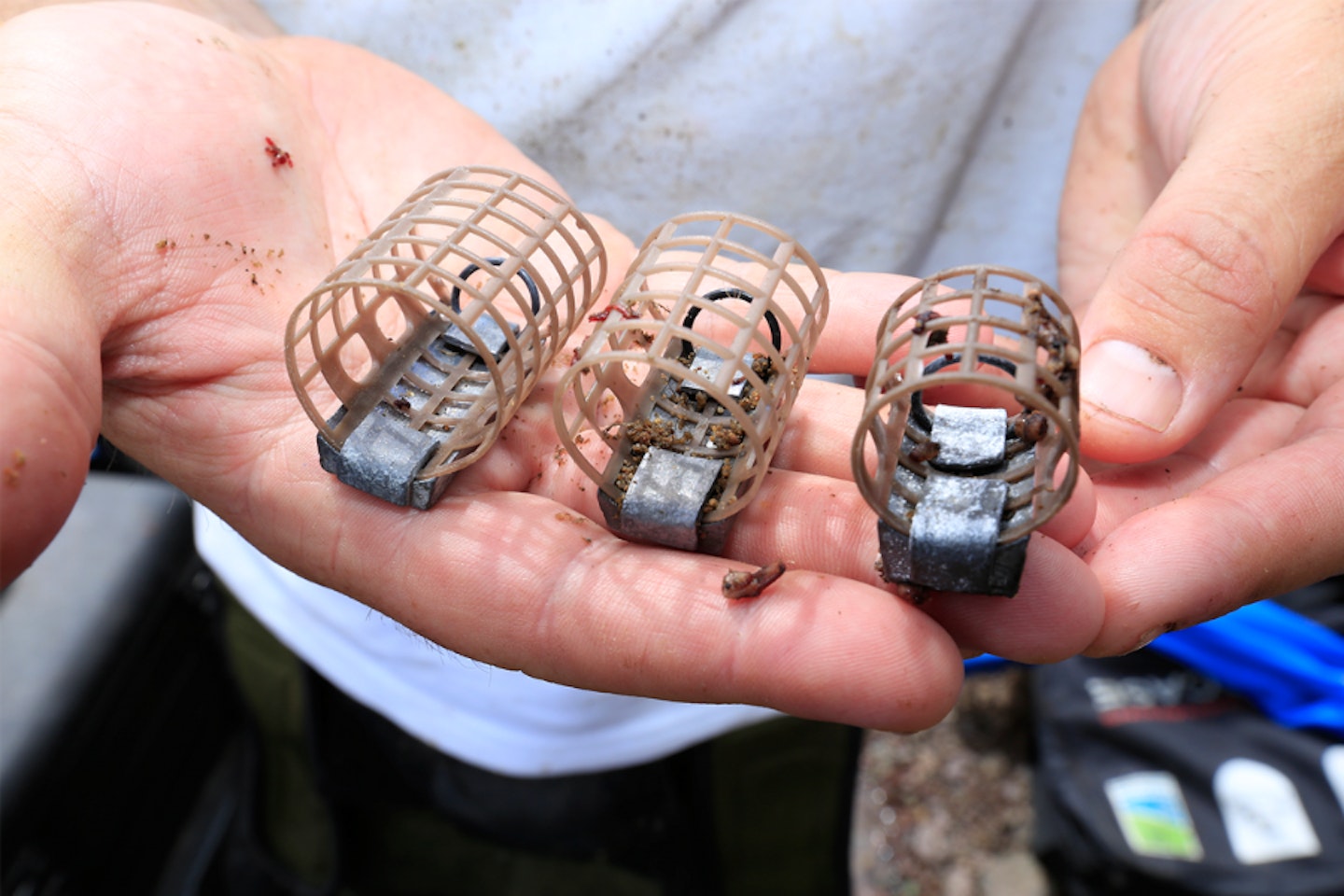There’s something timeless about chucking a cage feeder for bream on a big, open lake. It’s one of those classic tactics that just keeps on delivering, whether you’re chasing a few bites on a quiet pleasure session or hoping for a ton-up match weight. While the method feeder might get all the modern headlines, the humble cage is still more than capable of doing the damage.
Feed smart, not heavy
When you're fishing a cage, what goes in matters just as much as what comes out. Instead of launching ten feeders' or 'boshing' in a load of bait up feeder at the start and hoping for the best, the smart play is more subtle, four or five quick casts or 2 or 3 bait up feeders full will establish the area, then it's a case of letting each chuck do the topping up. If the fish want some bait then you can always top up, but you can’t take it out.
GET THE BAIT OUT WITH THE BEST BAIT UP RODS.

Fixed or running?
Most fisheries will tell you what’s allowed and what’s not, so always check to make sure you're set up properly. If you’ve got a choice, there’s a trade-off to consider. A running rig is clean, neat, and tangle-resistant, the feeder runs freely on the mainline and gets stopped by a bead or swivel just above the hooklength. Ideal when the bites are shy, or the fish are backing off.
But if you’re after a bit more bite registration, and possibly a few more self-hooked fish, then the fixed loop rig comes into its own. It’s still semi-running, but when a bream picks up the hookbait and moves off, the rig tightens quickly and often results in the rod tip wrapping round.
DISCOVER THE BEST KIT TO IMPROVE YOUR DISTANCE FEEDER FISHING.

Bait choices, rotate options
Starting on double red maggot is a safe bet. It gets attention, especially from skimmers. But don’t be afraid to tweak it, a bit of chopped worm, a grain of corn, or even dead reds can single out the bigger bream. On siltier lakes, casters and dead maggots can be absolute dynamite, particularly when matched with a feeder loaded full of them.
ALWAYS CHOOSE THE CORRECT HOOKBAIT WITH THIS EXPERT GUIDE.

Hooklengths that work
A 50cm (roughly 20 inches) hooklength is a good place to begin. If you’re hitting bites, stick with it. If not, shorten it gradually in 10cm increments, sometimes it’s just a case of bringing the bait closer to the feeder. And on tougher days, especially when fish are sitting just off bottom, going longer can definitely buy you more bites.
BE COMFORTABLE ON YOUR NEXT SESSION SITTING IN ONE OF THE BEST FEEDER FISHING CHAIRS.

Tailor your groundbait to taste
On venues where pellets are king, blend a fishmeal mix with your favourite bream groundbait. A 50/50 mix works nicely, but there are plenty of sweet fishmeal options out there now. A darker mix often works better in clear water, and if you’re fishing a commercial, don’t be afraid to introduce a handful of micros. On more natural lakes, chopped worm, dead maggots, and casters will all pull fish into the swim.
GET THE BEST OUT OF YOUR GROUNDBAIT MIXES WITH THIS INFORMATIVE GUIDE.

Metal or plastic?
Metal cage feeders are the go-to for long-range work, heavy enough to hit the clip with ease, and quick to empty on the drop. But if the lake’s deeper and you want the bait to stay put a bit longer, a plastic open-end with fewer holes might be the better option. Medium-sized cages tend to offer the best of both worlds, will hold the bait in on the drop and allow a steady release when on the bottom.
THE BEST MEDIUM FEEDER RODS ARE SUITED TO BREAM FISHING WITH A CAGE FEEDER.

Try boom loops
If you're using a fixed rig, tangles can be a pain. A quick fix? Tie a couple of small overhand loops into your mainline just below where the feeder sits. This creates a boom that keeps the hooklength kicking out at an angle, away from the feeder. It’s a simple trick that makes a big difference.
THIS EXPERT GUIDE WILL HELP YOU CHOOSE THE RIGHT FEEDER FOR YOUR NEXT SESSION.

